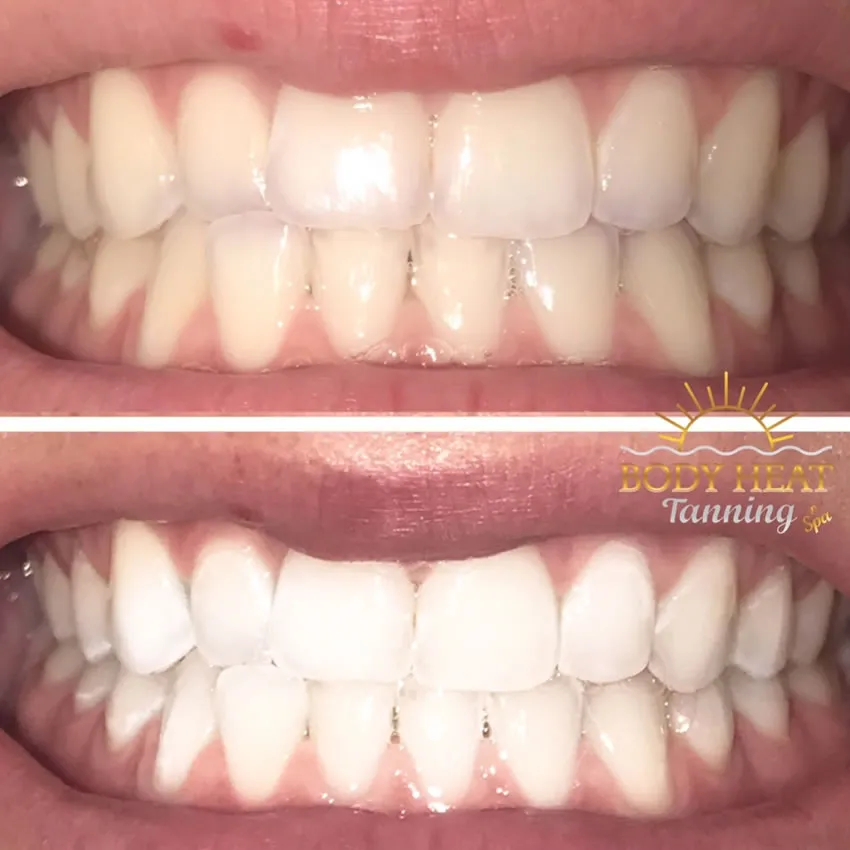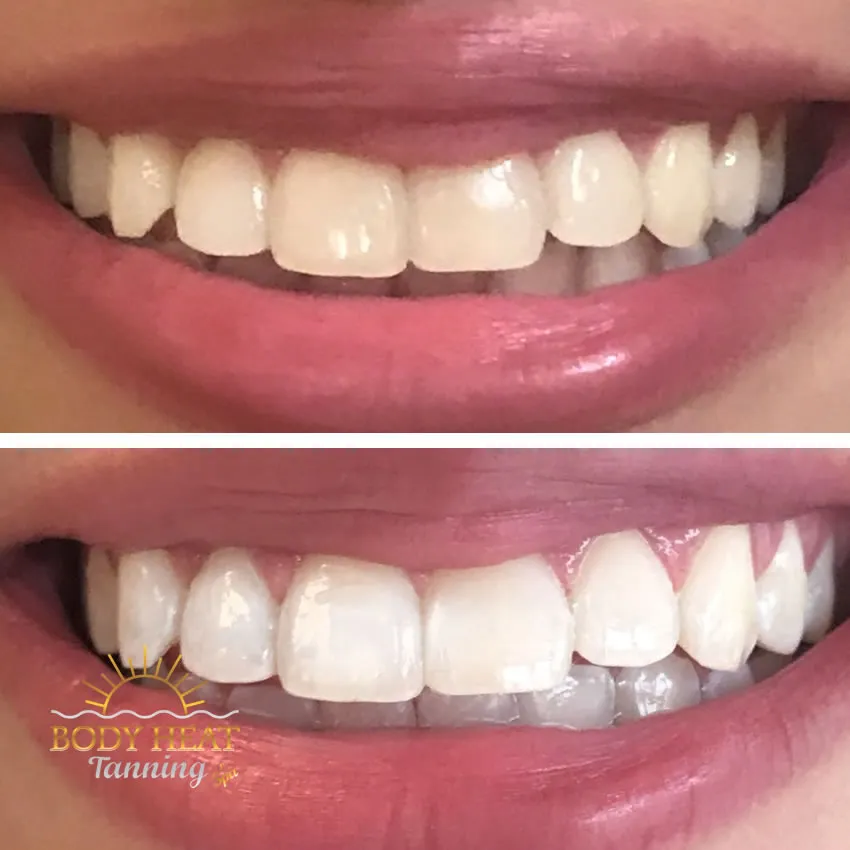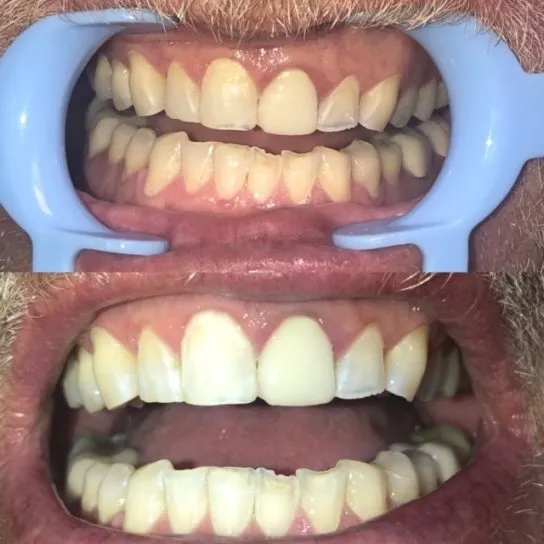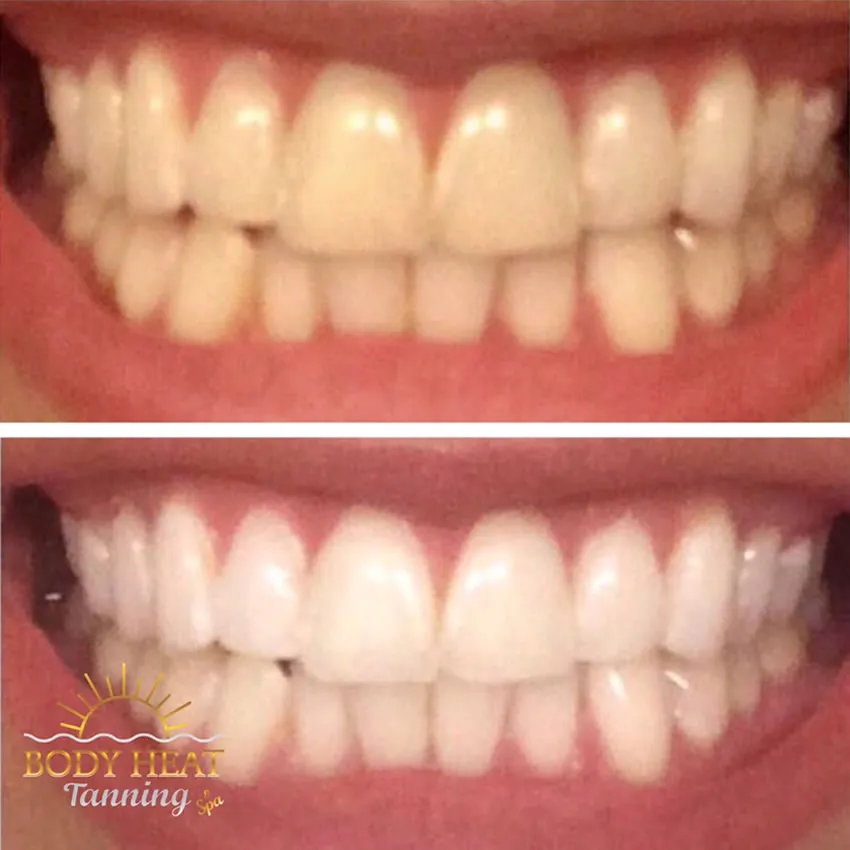Why Teeth Whitening Matters
A bright, white smile can significantly boost your confidence and make a positive impression. Teeth whitening has become a popular cosmetic dentistry procedure for this very reason. Beyond aesthetics, having a bright smile can also contribute to better oral hygiene practices. When you’re proud of your teeth, you are more likely to take better care of them. The pursuit of a brighter smile isn’t just about vanity it’s about feeling good about yourself and presenting the best version of you to the world. The ability to smile confidently can open doors in personal and professional settings, leaving a lasting positive impact. A whiter smile can also make you look younger and more vibrant, adding to your overall appeal. Therefore, understanding the various teeth whitening options and their benefits is crucial for achieving a dazzling and healthy smile.
Common Causes of Tooth Discoloration
Tooth discoloration can result from various factors, some of which are unavoidable, but understanding these causes is essential for effective teeth whitening strategies. The natural aging process can lead to enamel thinning and dentin darkening. This is because as we age, the outer enamel layer of our teeth wears down, revealing the yellowish dentin underneath. Additionally, genetics play a role; some individuals are predisposed to having naturally darker teeth. Environmental factors and certain medical treatments can also cause discoloration. For instance, exposure to excessive fluoride during childhood or certain medications, such as tetracycline, can lead to staining. Dietary habits are major contributors, too. Therefore, identifying the cause of your discoloration is important for choosing the most effective teeth whitening method.
Foods and Drinks That Stain Teeth

Certain foods and drinks contain chromogens, which are color-producing substances that can stain tooth enamel. Coffee and tea, for instance, are notorious for their staining properties, as are red wine and dark-colored sodas. These beverages have intense colors that can easily adhere to the porous surface of your teeth, causing stains over time. Berries, such as blueberries and blackberries, also contain chromogens and can contribute to discoloration. Even seemingly healthy foods like beets and certain curries can stain teeth due to their strong pigments. Frequent consumption of these items, without proper oral hygiene, can exacerbate the problem. It is always wise to rinse your mouth with water after consuming these foods and drinks to minimize staining. Consider limiting your intake of these staining agents to maintain a brighter smile.
The image of foods that stain teeth can be used here: https://example.com/foods-that-stain-teeth.webp
Smoking and Tobacco Use
Smoking and tobacco use are significant contributors to tooth discoloration. The nicotine and tar in tobacco products are notorious for staining teeth, leading to a yellow or brown hue. These substances penetrate the enamel, causing persistent stains that are difficult to remove with regular brushing. The chemicals in tobacco also disrupt the natural balance of the mouth, increasing the likelihood of plaque and tartar buildup, which can further contribute to discoloration. Smoking also reduces saliva production, which is essential for washing away food particles and bacteria. The overall impact of smoking on oral health is extensive, including an increased risk of gum disease, tooth decay, and even oral cancer. Quitting smoking is one of the best steps you can take to protect your teeth and overall health.
Aging and Genetics
Both aging and genetics can influence the color of your teeth. As we age, the enamel on our teeth naturally wears down, exposing the underlying dentin, which is yellower in color. This is a gradual process that contributes to the perception of darker teeth over time. Genetics also play a significant role; some individuals are born with naturally thinner enamel or a yellowish dentin, making their teeth appear less white. Lifestyle choices, such as diet and oral hygiene practices, can accelerate these changes, but the underlying genetic predisposition is a key factor. Understanding these inherent aspects of tooth coloration is essential for setting realistic expectations for teeth whitening treatments. Sometimes, the level of whiteness achievable is limited by these intrinsic factors. Therefore, it is always wise to consult a dentist to learn about the best teeth whitening option according to your teeth condition.
Teeth Whitening Methods Options

There are several teeth whitening methods available, each offering different levels of convenience, effectiveness, and cost. These methods generally fall into two broad categories: professional treatments performed by a dentist and at-home options. Professional treatments often involve stronger whitening agents and can deliver quicker results. At-home methods, which include over-the-counter products, are typically more affordable but may require more time to achieve the desired level of whiteness. Understanding the pros and cons of each approach is important for making an informed decision. The best method for you will depend on your individual needs, the severity of your staining, and your budget. The options span from whitening toothpastes and strips to in-office procedures and custom-fitted trays. Consider consulting with your dentist to determine the most suitable option for your specific situation.
Professional Teeth Whitening
Professional teeth whitening, performed by a dentist, is often the most effective and fastest way to achieve a brighter smile. These treatments use stronger concentrations of bleaching agents, such as hydrogen peroxide, than those found in at-home products. This allows for more dramatic results in a shorter period. There are several types of professional whitening procedures, including in-office whitening and dentist-supervised at-home kits. In-office whitening involves the application of a whitening gel directly to the teeth, often followed by the use of a special light or laser to accelerate the bleaching process. The dentist can monitor the procedure to minimize the risk of side effects, such as tooth sensitivity. Professional whitening also provides the benefit of personalized advice and guidance from a dental professional. Therefore, choosing a professional treatment can be a great investment in your smile.
In-Office Whitening Procedures
In-office teeth whitening procedures offer the most immediate and dramatic results. These treatments typically involve a highly concentrated whitening gel applied directly to the teeth by a dentist. A special light or laser is often used to activate and accelerate the bleaching process. The dentist carefully monitors the entire procedure to ensure safety and minimize potential side effects, such as tooth sensitivity. The entire process can be completed in a single visit, making it a convenient option for those seeking quick results. Before the procedure, the dentist may clean your teeth to remove plaque and debris, which can enhance the whitening effect. While in-office whitening can be more expensive than at-home methods, the results are often superior, and the professional oversight provides peace of mind. This is also the best option for those who are very sensitive to teeth whitening.
The image of professional teeth whitening can be used here: https://example.com/professional-teeth-whitening.webp
At-Home Whitening Kits

At-home teeth whitening kits offer a convenient and often more affordable alternative to professional treatments. These kits typically include custom-fitted trays or strips filled with a whitening gel containing a lower concentration of hydrogen peroxide or carbamide peroxide. Whitening strips are easy to use and are applied directly to the teeth, while tray-based systems involve filling custom trays with the whitening solution and wearing them for a specified amount of time each day. While at-home kits may take longer to achieve the desired results than in-office procedures, they can still effectively lighten the teeth over time. It’s important to carefully follow the instructions provided with the kit and to consult with your dentist before starting any at-home whitening treatment. This is to ensure that it is safe and suitable for your teeth and gums. At-home kits are ideal for those who want to whiten their teeth at their convenience and within a certain budget.
The image of at-home teeth whitening kits can be used here: https://example.com/at-home-teeth-whitening-kits.webp
Whitening Toothpastes and Rinses
Whitening toothpastes and mouth rinses are readily available over-the-counter and offer a mild approach to teeth whitening. These products contain abrasive agents or chemical compounds that help remove surface stains, such as those caused by coffee or tea. Whitening toothpastes are typically more effective than mouth rinses and can help brighten teeth by a shade or two over time. They work by gently polishing the teeth and removing superficial stains. However, they do not change the intrinsic color of the teeth, unlike professional whitening treatments. It is important to choose a whitening toothpaste with fluoride to help protect against tooth decay. Overuse of abrasive whitening toothpastes can potentially wear down enamel, so it is crucial to use them as directed and consult with your dentist. Whitening rinses are best used as a complement to regular brushing and flossing.
Choosing the Right Whitening Method
Selecting the right teeth whitening method involves considering several factors, including your oral health, the severity of your discoloration, and your budget. If you have sensitive teeth or significant staining, professional whitening may be the best option. This is because a dentist can carefully monitor the treatment and use stronger whitening agents safely. For milder staining and those on a budget, at-home kits or whitening toothpastes may be suitable. Your lifestyle also matters. If you need immediate results for a special event, in-office whitening is ideal. However, if you prefer a more gradual approach, at-home treatments are more convenient. Always consult with your dentist for personalized advice. They can assess your teeth, recommend the most appropriate method, and address any potential concerns or risks. Taking the time to research and discuss your options with a dental professional will ensure you achieve the best possible results safely and effectively.
Consider Your Teeth Sensitivity

Tooth sensitivity is a common side effect of teeth whitening, so considering your teeth sensitivity is essential when selecting a whitening method. If you already have sensitive teeth, it’s advisable to consult with your dentist before undergoing any whitening treatment. They may recommend a lower concentration of the whitening agent or suggest using a desensitizing toothpaste before, during, and after the procedure. Professional whitening procedures can often be customized to minimize sensitivity, while at-home kits may require adjustments in application time or frequency. Avoiding extremely hot or cold foods and drinks during the whitening process can also help reduce discomfort. Be mindful of any sensitivity throughout the whitening process. If the sensitivity becomes unbearable, it’s crucial to stop the treatment and consult with your dentist for further guidance.
The image of teeth sensitivity can be used here: https://example.com/teeth-whitening-sensitivity.webp
Evaluate the Cost and Convenience
Cost and convenience are important factors to consider when choosing a teeth whitening method. Professional in-office whitening is typically the most expensive option, but it offers the quickest results and is performed under the supervision of a dentist. At-home whitening kits are generally more affordable, though the cost can vary depending on the type and brand. Whitening toothpastes and rinses are the most budget-friendly options, but their whitening effects are often more subtle. Assess your budget and how quickly you want to see results. In terms of convenience, in-office treatments require a single visit, while at-home methods require more time and commitment. Consider your lifestyle and how much time you’re willing to dedicate to the whitening process. Think about factors such as the number of appointments, the time required to wear trays or apply strips, and the overall maintenance needed.
Review Professional Recommendations
Before starting any teeth whitening treatment, it’s always wise to review professional recommendations from your dentist. Your dentist can evaluate your oral health, identify any potential issues, such as cavities or gum disease, and recommend the most suitable whitening method for your specific needs. They can also provide personalized advice based on your teeth’s condition and the severity of any staining. A dental professional can explain the pros and cons of each option, ensuring you make an informed decision. During your consultation, they can also address any questions or concerns you may have about the procedure, helping you to feel comfortable and confident. Following your dentist’s recommendations can also improve your chances of achieving the desired results safely and effectively. Ultimately, professional guidance is essential for a successful teeth whitening experience.
Maximizing Teeth Whitening Results

To maximize the results of teeth whitening, it is essential to follow a comprehensive approach that includes maintaining good oral hygiene and making conscious lifestyle choices. This begins with maintaining a consistent oral hygiene routine. Brushing your teeth at least twice a day for two minutes each time, flossing daily, and using an antibacterial mouthwash can help prevent new stains from forming. In addition to good oral hygiene, be mindful of your diet and lifestyle habits. Limiting or avoiding stain-causing foods and drinks, such as coffee, tea, red wine, and berries, can help maintain your bright smile. Quitting smoking and avoiding tobacco products will also help prevent discoloration. Regularly visiting your dentist for checkups and cleanings is also crucial. Remember that consistent efforts will ensure your teeth stay whiter and healthier for a longer period.
Maintain a Consistent Oral Hygiene Routine
Maintaining a consistent oral hygiene routine is fundamental to maximizing and maintaining the results of teeth whitening. This involves brushing your teeth twice a day for at least two minutes each time, using fluoride toothpaste. Proper brushing removes plaque and food particles that can contribute to staining. Daily flossing is also crucial for removing plaque and food debris from between your teeth and along the gumline. Using an antibacterial mouthwash can help further reduce plaque and bacteria, providing an extra layer of protection against staining. Regular dental checkups and professional cleanings are also essential. These help remove any buildup and surface stains that regular brushing and flossing cannot eliminate. A well-maintained oral hygiene routine not only enhances the effects of teeth whitening but also promotes overall oral health, preventing decay and gum disease.
The image of oral hygiene routine can be used here: https://example.com/oral-hygiene-routine.webp
Avoid Stain-Causing Foods and Drinks
Avoiding stain-causing foods and drinks is critical to preserving the results of teeth whitening and maintaining a bright smile. Coffee, tea, red wine, and dark-colored sodas are notorious for staining teeth. These beverages contain pigments that can easily adhere to the enamel, causing discoloration. Berries, such as blueberries and blackberries, and certain spices, like turmeric, also contain chromogens and can contribute to staining. Limiting the consumption of these items is advisable. If you do consume them, rinsing your mouth with water immediately afterward can help reduce staining. Using a straw when drinking dark beverages can also minimize direct contact with your teeth. Making conscious dietary choices and maintaining a good oral hygiene routine will significantly help in preserving the results of your teeth whitening treatment.
Regular Dental Checkups and Cleanings

Regular dental checkups and cleanings are crucial for maintaining the results of teeth whitening and ensuring overall oral health. During these visits, your dentist will thoroughly examine your teeth and gums for any signs of decay, gum disease, or other issues. Professional cleanings involve removing plaque and tartar buildup, which can contribute to staining and discoloration. Your dentist or hygienist can also polish your teeth, helping to remove surface stains and enhance the brightness of your smile. Regular checkups allow for early detection and treatment of dental problems, preventing them from worsening and potentially affecting your teeth’s appearance. Following your dentist’s recommendations for oral hygiene, including brushing, flossing, and using mouthwash, will ensure that your teeth stay healthy and bright for a long time.
The image of dental checkups can be used here: https://example.com/dental-checkups.webp
Potential Side Effects of Teeth Whitening
While teeth whitening is generally safe, it can have potential side effects. Knowing these can help you prepare for and manage any issues that arise during or after treatment. The most common side effects are tooth sensitivity and gum irritation. These side effects are usually temporary and resolve shortly after the whitening process. Sensitivity occurs because the whitening agents can penetrate the enamel and reach the dentin, which contains nerve endings. Gum irritation can occur if the whitening agent comes into contact with the gums. To minimize these side effects, always follow the instructions provided with your whitening kit. Consult your dentist to see if they can recommend desensitizing toothpastes. Understanding and being prepared for these potential side effects can make the teeth whitening experience more comfortable and successful.
Tooth Sensitivity
Tooth sensitivity is one of the most common side effects of teeth whitening. It occurs when the whitening agents penetrate the enamel and reach the dentin layer, which contains tiny tubules that lead to the tooth’s nerve. This can cause temporary discomfort or sensitivity to hot or cold foods and drinks. The level of sensitivity can vary depending on the individual and the whitening method used. To manage tooth sensitivity, use a desensitizing toothpaste containing ingredients like potassium nitrate. This helps block the tubules and reduce nerve irritation. Consider using a soft-bristled toothbrush and avoiding overly abrasive toothpastes. If the sensitivity is severe or prolonged, stop the whitening treatment and consult your dentist, who may recommend a different approach or provide additional relief options.
The image of teeth sensitivity can be used here: https://example.com/teeth-whitening-sensitivity.webp
Gum Irritation
Gum irritation is another potential side effect of teeth whitening, often resulting from contact between the whitening agent and the gum tissue. This can cause redness, swelling, and mild discomfort. To minimize the risk of gum irritation, ensure that the whitening trays fit properly and do not overflow, keeping the gel away from your gums. If you are using whitening strips, avoid applying them directly to the gums. If you experience gum irritation, discontinue the treatment and consult your dentist. They may recommend using a desensitizing agent or adjusting the whitening process. In most cases, gum irritation is temporary and will resolve shortly after the whitening treatment is stopped. Proper application and careful monitoring can significantly reduce this side effect.
Best Practices for Long-Lasting Results
Achieving long-lasting teeth whitening results requires a commitment to consistent oral hygiene, healthy lifestyle choices, and regular dental care. Brushing your teeth twice a day for two minutes with fluoride toothpaste, flossing daily, and using an antibacterial mouthwash are fundamental practices. Avoiding stain-causing foods and drinks, such as coffee, tea, red wine, and berries, can help prevent new stains from forming. Quitting smoking and tobacco use is also essential. Regular dental checkups and professional cleanings are crucial for removing surface stains and maintaining overall oral health. Your dentist may recommend touch-up treatments periodically to keep your smile looking its best. Adhering to these best practices ensures that you maintain a bright, confident smile for years to come, allowing you to enjoy the benefits of your teeth whitening investment.
